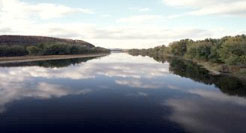
By Christina Morozov
Staff Writer
The Susquehanna River spans approximately 444 miles across three different states on a path ending at the Chesapeake Bay. It is a vivacious habitat full of different species of aquatic and non-aquatic animals and plants. However this picturesque glimpse of nature is not what it seems. The river is quickly approaching the line towards being in utter perils. A recent report by PennEnvironment claimed that in 2007 more than 2.6 million pounds of toxic chemicals were dumped into the river. This staggering figure makes the river one of 20 in the country most overwhelmed by industrial releases. That same year it was also reported that a whopping 10 million pounds of chemicals were discharged into Pennsylvania’s waterways as a whole, making it less than only a meager five other states.
Industry and municipal wastewater treatment plants can discharge metals, and chlorinated organic compounds into the water. These discharges and still many others, can cause cancer, reproductive problems, and also have the potential to persist in the environment, making them all the more deadly. Inside the water these toxins can increase stress placed on aquatic animals’ health, as well as lower their reproductive success. The toxins can accumulate in fish and shellfish that humans would then consume.
As if this wasn’t shocking enough, it only begins to paint a rough picture of contamination. Along with industrial releases, the Susquehanna also falls victim to other types of pollutants. One of the major attributes afflicting the river is that it is still trying to heal itself from over 150 years of legacy pollution. These include coal mining deposits and waste and antiquated sewage treatment plants that have never been mediated.
The other pollutant sources that plague the Susquehanna can be divided into two other categories. The first is nutrients. They can include nitrogen and phosphorous that are released from farm runoffs or from sewage treatment plants. Once introduced to the water, these nutrients can stimulate excess algal growth. Thick algae growth on the surface of the river can block sunlight needed by aquatic plants which are subsequently needed by river life for shelter or food. As the algae start to die and fall to the bottom of the river, they decay and consume oxygen needed by fish and other aquatic animals.
The second type of pollutant is sediments. Soil is being continuously disturbed and tilled by farming and construction as the population of the surrounding area increases. The result of this erosion is an increase in sediment that clouds the river, blocking sunlight and covering fish in layers of deposits.
Several recommendations can be made to delay pollution and save the river as a habitat and natural resource for many. The first one is to push industrial facilities to move away from toxic chemicals to safer alternatives. The second is to strengthen permit controls and increase degrees of penalty for acting outside those laws. The third is to make sure small streams and headwaters are protected by the Clean Water Act. Other aspects include inhibiting pollutants that come from point sources that enter the river from sewage and industrial discharge, and non-point sources, from construction, urban, rural, and agricultural runoffs. One of the main principals hindering the activation of these recommendations is the general lack of resources. More funding on state and federal levels would greatly aid in the mending of the Susquehanna. Therefore, only time will tell then, whether the river can recover or whether it will become another extinct species.



![Reblog this post [with Zemanta]](https://img.zemanta.com/reblog_e.png?x-id=f6e1514f-6ac5-41d6-9ad7-4b1fe45e524f)






